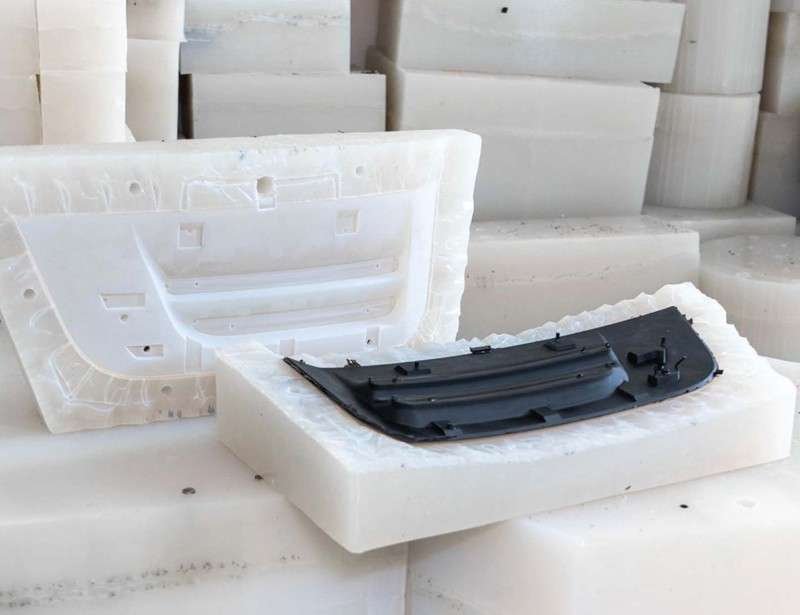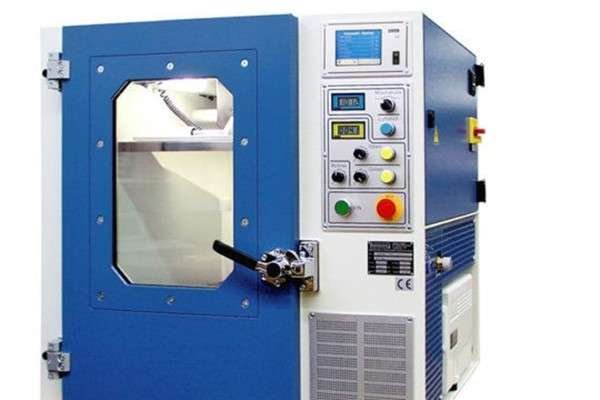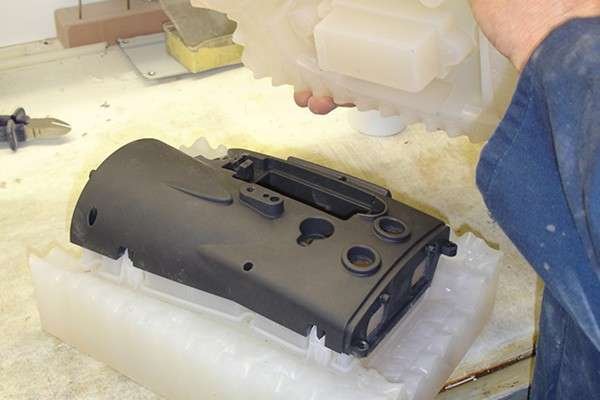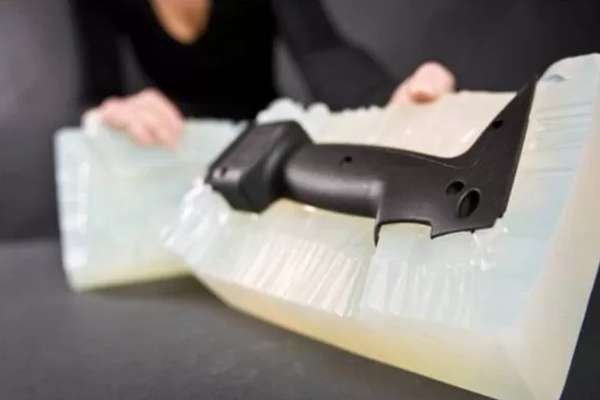Vacuum Casting Services
Get reliable vacuum casting services for high-quality prototypes and production parts at competitive prices. XinCheng offers highly detailed casting parts with consistent quality.
- ISO 9001:2015 certification
- Production grade quality
- Fast response
- Engineering support

What is Vacuum Casting?
Vacuum casting, also known as urethane casting, is indeed a manufacturing technique used to create high-quality, small-batch plastic or rubber parts. This process involves pouring liquid casting material, typically a two-part polyurethane resin, into a mold within a vacuum chamber.
The vacuum is applied to remove air bubbles and ensure proper material flow, resulting in parts with minimal defects and an excellent surface finish. In addition, material choice, part geometry, and master model usually determine the final effect of the cast parts.
Why Choose Vacuum Casting for Your Low-volume Production?
-
Fine DetailsThe urethane casting technique is used to make vacuum-cast parts with complex designs with quality elastomeric materials. We provide reliable vacuum casting services, ensuring your prototypes and low-volume produced parts have the exact features as the intended final product.
-
Cost-effectiveVacuum casting allows you to make cast parts with cheaper molds rather than costly metal tooling that can increase cycle time. At XinCheng, we offer urethane vacuum cast parts which are more affordable than the tooling used for injection molding.
-
Extensive Material and Surface Finish OptionsThe urethane casting process allowed the flexibility of choosing from high-quality soft and flexible or rigid and impact-resistant resins. We offer various surface finish options, allowing for the production of parts that closely match the desired aesthetics and functionality.
-
Faster DeliveryVacuum casting offers quicker turnaround times compared to manufacturing traditional mold methods. The process can be produced multiple replicas within a short timeframe, enabling your project to accelerate its product development and market entry timelines.
How Does Urethane Casting Work?
The vacuum casting process is straightforward and in three main steps. Trust our professional engineers and technicians to handle your project well.
Step 1: Making the Master Model
The master model is 3D solids of the CAD design, and its quality usually decides the casting urethane part’s quality. We use CNC machining to make a quality master pattern for tighter tolerance, optical clarity, and a glossy finish. Moreover, we can also use SLA for the master model when dealing with parts with complex designs and structures.
Step 2: Silicone Mold Making
We create our silicone casting molds from liquid silicone (RTV molds). The silicone rubber possesses excellent chemical stability, flexibility, and self-releasing properties that allow the imitation of fine details from the master and minimal shrinkage.
Depending on the part’s size, it takes 12-24 hours to complete the curing in an oven at 40 degrees Celsius. Once the silicone dries, we cut open the mold to extract the master model while we have an empty space: the original’s negative shape.

Step 3: Create Vacuum Casting Parts
We can easily create and replicate cast parts with exact mechanical features using our standard operational technique at XinCheng. We have expert urethane casting technicians that oversee the working framework, including mixing, degassing, stirring, preheating, casting, and demolding. You can be sure of a seamless operation and creation of impeccable copies of the master model.

Vacuum Casting Services at XinCheng
XinCheng offers you a perfect mix of high-tech facilities and extensive manufacturing capabilities to ensure you get superior-quality vacuum cast parts.
Impeccable Quality and Speed
XinCheng matches our extensive experience in vacuum casting techniques with advanced tools and technology. We can execute your vacuum casting needs within faster cycle times.
Excellent Material and Testing Services
We only use resins with superior quality from reliable brands to ensure excellent product quality. Our expert technicians possess rich knowledge and experience to help you choose only the most suitable material for your project.
Instant Quotations
XinCheng offers you fast quotations on your vacuum casting orders with no MOQ in less than 24 hours.
DFM Support
Since most vacuum casting procedures are for prototyping, we know these parts are in the final design phase. So, we offer you a reliable design for manufacturing support that helps your parts achieve design perfection.
Surface Finishing Services
As your one-stop machine shop, we offer other machining solutions beyond vacuum casting. We provide an extensive list of complementary finishing options that enhance your products.
Vacuum Casting Materials
We use high-quality vacuum casting material at XinCheng. Although polyurethane is the only available material for vacuum casting. There are good ones and bad ones out in the market. At XinCheng, we always choose good materials made by good material supplier.
Polyurethane has many kinds. There are materials similar to PMMA, PC, ABS, Nylon, and more. XinCheng is here to help you choose the best one for your each project.

Surface Finish Standards for Vacuum Casted Parts
XinCheng offers a comprehensive list of secondary finishing operations to improve the mechanical and aesthetic appearance of your product. We will work with you to choose the suitable finishing option for your part’s application.
| Available Finishing | SPI Standard | Description |
|---|---|---|
| High Gloss | A1, A2, A3 | We form this highly reflective finishing type by polishing the master model before mold creation. Its high-gloss finish provides the high transparency required for lenses, cosmetic components, and other cleanable surfaces. |
| Semi-Gloss | B1,B2,B3 | Although the semi-gloss grade is less reflective, it offers some shininess or gloss. However, you can achieve a smooth and cleanable surface between high-gloss and matte when you use gritty sandpaper |
| Matte Finish | C1,C2,C3 | Sand or Bead blasting the master pattern can give vacuum cast parts a satin-like finish. The C-grade surface finish is well-suited for handheld products and high-touch areas. |
| Custom | D1,D2,D3 | XinCheng offers custom surface finishing services through other processes. So, you can request unique secondary finishes to have the best results. |
Vacuum Casting Design Tips
Standard Accuracy
We use a standard tolerance of ±0.15mm/100mm, while the highest precision attainable is ±0.05mm.
Minimum Wall Thickness
We use the minimum wall thickness of 0.5mm, while the best ranges are between 1.5mm-2.5mm to fill the mold appropriately.
Maximum Part Dimensions
The vacuum tool can hold a 2.0M x 1.2M x 1.0M mold configuration.
Lifetime of Silicone Mold
A typical silicone mold makes up to 20-25 copies per mold. However, one mold can only create 10-12 cast parts in regular quantities for high-quality requirements.
Lead Time
Depending on the mold’s volume and complexity, we can produce about 50 copies within 7-10 days.
Surface Textures
The regular surface textures include colored, painted, textured, inserted, coated, clear polished, and over-molding.

